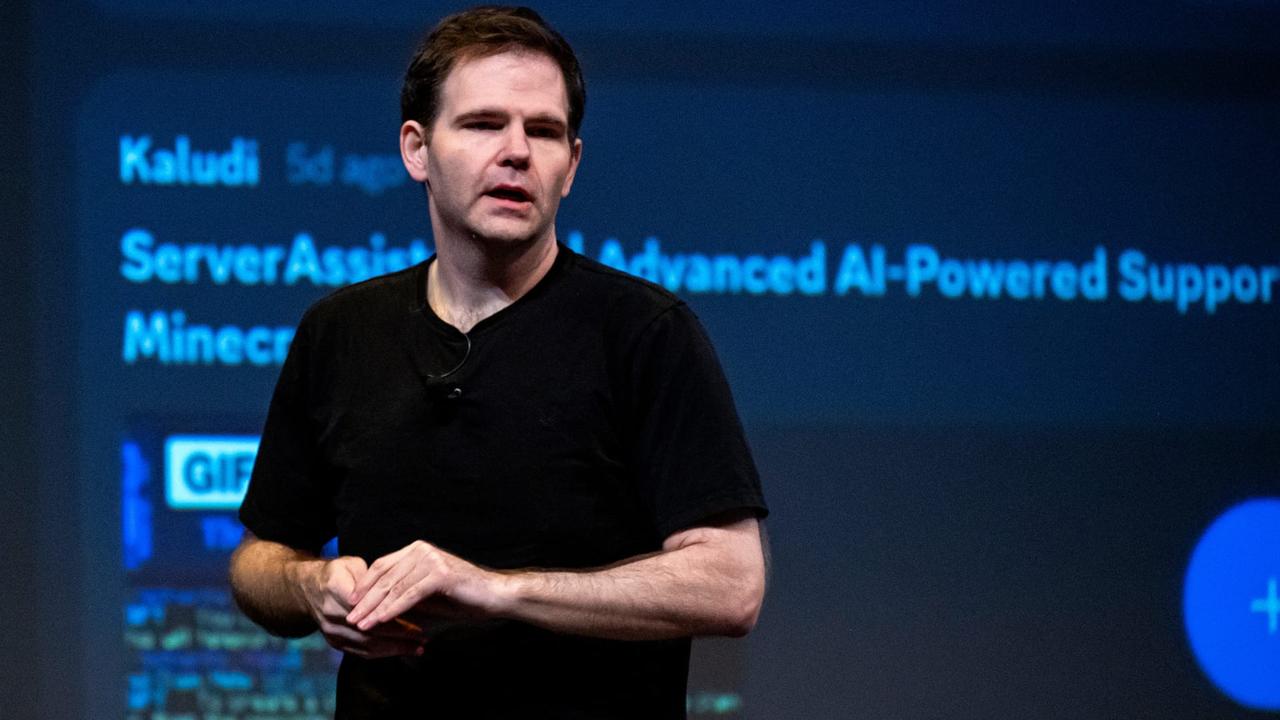Nvidia Phases Out Support for Older GPU Architectures: Maxwell, Pascal, and Volta Moving to Legacy Status
2 Sources
2 Sources
[1]
Nvidia prepares to move Maxwell, Pascal, and Volta GPUs to legacy driver status
In context: Nvidia is preparing to transition its Maxwell, Pascal, and Volta GPU architectures to a legacy driver branch, signaling the end of an era for these iconic products. This transition reflects the company's focus on supporting more recent hardware capabilities, particularly in areas such as AI and ray tracing. Nvidia's CUDA 12.8 release notes indicate that support for the older architectures is now considered "feature-complete" and will be frozen in an upcoming release. This move marks a significant shift for Nvidia as it begins to phase out support for the remaining GTX-era architectures. While CUDA support will continue for Maxwell, Pascal, and Volta GPUs, they will no longer receive new features in future updates. It's important to note that this change does not immediately affect GeForce gaming driver support, as Maxwell and Pascal GPUs are still included in the support list for the GeForce RTX series driver. Nvidia has not provided a specific date for the end of full support for these three GPU architectures, but the transition is expected to occur soon. Once this change takes effect, the GTX 16-series, based on the Turing architecture of the RTX 20-series, will be the only remaining GTX-series GPUs with full support. The Maxwell architecture, introduced 11 years ago, represents the oldest of the outgoing GPU architectures still supported by Nvidia on the consumer side. It debuted with the GeForce GTX 750 series and was followed by the GTX 900 series. Maxwell brought significant performance-per-watt improvements over its predecessor, Kepler, and was particularly notable for its efficiency in mobile GPUs. Pascal, introduced in 2016 with the GeForce GTX 1000 series, marked one of Nvidia's most significant architectural advancements in the 2010s. It utilized TSMC's 16nm finFET plus technology, doubling the density of Maxwell's 28nm node and delivering substantial performance gains. The GTX 1080, for instance, offered 60-65 percent higher performance than its predecessor, the GTX 980. Volta, released in 2017, was primarily focused on AI applications and enterprise use. It introduced Tensor cores, specialized units designed for AI workloads, which provided nine times the performance of Pascal in AI-specific tasks. Volta was largely confined to the enterprise sector, with the Titan V being the only desktop GPU to feature this architecture. For Linux users, most distributions will continue to support legacy versions of the Nvidia driver, ensuring that affected cards will remain functional for the foreseeable future. However, users should be aware that they will not receive new features or optimizations moving forward.
[2]
Nvidia starts phasing out Maxwell, Pascal, and Volta GPUs -- GeForce driver support status unclear
Three generations of Nvidia GPUs are moving to the legacy driver branch. Nvidia's release notes for CUDA 12.8 revealed that Maxwell, Pascal, and Volta GPUs will likely transition to the legacy driver branch. The document states that "architecture support for Maxwell, Pascal, and Volta is considered feature-complete and will be frozen in an upcoming release." This move represents the beginning of the end for all remaining GTX-era Nvidia architectures. While CUDA support for Maxwell, Pascal, and Volta remains, the legacy GPUs will not receive any new features Nvidia might provide in the future. It's crucial to highlight that this has nothing to do with GeForce gaming driver support. In fact, Maxwell and Pascal continue to be on the support list for the GeForce RTX series driver, unlike Kepler. Nvidia didn't detail whether or when it'll drop support for Maxwell, Pascal, and Volta GPUs for the gaming driver. Nvidia has not issued an exact date for the end of full support for these three GPU architectures, but it will soon. The current CUDA toolkit still supports the three affected architectures, but they won't receive future updates. Once the move goes through, the only remaining GTX-series GPUs with full support will be the GTX 16-series, based on the RTX 20-series' Turing architecture. The Maxwell architecture is the oldest outgoing GPU architecture that is still supported by Nvidia (at least on the consumer side). It brought massive performance-per-watt improvements over Kepler, its predecessor. Maxwell was first unleashed in the GTX 700 series as the GTX 750 Ti and GTX 750. Both 750-series GPUs went down as some of the most power-efficient entry-level GPUs for their time, featuring the performance of competitor GPUs with triple-digit power consumption numbers at a TDP of just 60 watts. Maxwell was the first Nvidia architecture designed around mobile GPUs, using TSMC's existing 28nm process (at the time) but an all-new architecture that made significantly more efficient use of that node. The full-blown iteration of Maxwell in the GTX 900 series carried forward Maxwell's incredible efficency, with the GTX 980 and 970 featuring the best power efficency on the market for the time. Pascal would set the stage as one of Nvidia's most significant architectural advancements in the 2010s, providing further power efficiency improvements combined with giant performance leaps. Pascal was Nvidia's first architecture to use TSMC's 16nm finFET plus technology, providing twice the density of Maxwell's 28nm node. As a result, The GTX 1080 was, on average, 60-65% faster than the GTX 980 and 30-35% faster than the GTX 980 Ti. The GTX 1080 Ti would go on to show the full potential of the Pascal architecture, featuring 60% higher performance than the GTX 980 Ti at just $700. Volta was the foundation for all of Nvidia's architecture moving forward. It was the first architecture geared primarily toward AI. Volta was also the first Nvidia architecture to sport AI-specific Tensor cores, which provided substantially higher compute capabilities than Nvidia's shader/CUDA cores for AI-specific workloads. These first-gen Tensor Cores only provided 120 Tensor TFLOPs of performance but were nine times faster than Pascal in the same type of workload. Volta was focused almost exclusively on the enterprise world and was never put inside any GeForce-branded GPUs. The flagship GV100 was more than 30% larger than the previous gen GP100 (Pascal-based) GPU, operating on TSMC's 12nm FFN process. The only Volta GPU Nvidia made for desktop PCs was the Titan V (yes, you could even game on it if you wanted to).
Share
Copy Link
Nvidia is transitioning its Maxwell, Pascal, and Volta GPU architectures to legacy driver status, marking the end of an era for these iconic products and signaling a shift towards newer technologies.

Nvidia Announces Transition of Older GPU Architectures to Legacy Status
Nvidia, the leading graphics processing unit (GPU) manufacturer, has revealed plans to move its Maxwell, Pascal, and Volta GPU architectures to legacy driver status. This significant shift, detailed in the CUDA 12.8 release notes, marks the beginning of the end for these iconic GPU generations that have been instrumental in shaping the graphics and computing landscape over the past decade 1.
Impact on Support and Future Updates
The transition to legacy status means that while CUDA support will continue for these architectures, they will no longer receive new features in future updates. Nvidia has described the support for these architectures as "feature-complete," indicating that they have reached the pinnacle of their development cycle 2.
It's important to note that this change does not immediately affect GeForce gaming driver support. Maxwell and Pascal GPUs are still included in the support list for the GeForce RTX series driver. However, the exact timeline for the end of full support remains unclear, with Nvidia yet to announce a specific date for the transition 1.
A Look Back at the Iconic Architectures
Maxwell
Introduced 11 years ago, Maxwell debuted with the GeForce GTX 750 series and later expanded to the GTX 900 series. It brought significant performance-per-watt improvements over its predecessor, Kepler, and was particularly notable for its efficiency in mobile GPUs 1.
Pascal
Launched in 2016 with the GeForce GTX 1000 series, Pascal marked one of Nvidia's most significant architectural advancements in the 2010s. Utilizing TSMC's 16nm finFET plus technology, it doubled the density of Maxwell's 28nm node and delivered substantial performance gains. The GTX 1080, for instance, offered 60-65 percent higher performance than its predecessor, the GTX 980 2.
Volta
Released in 2017, Volta was primarily focused on AI applications and enterprise use. It introduced Tensor cores, specialized units designed for AI workloads, which provided nine times the performance of Pascal in AI-specific tasks. Volta was largely confined to the enterprise sector, with the Titan V being the only desktop GPU to feature this architecture 1.
Future Outlook
Once this transition takes effect, the GTX 16-series, based on the Turing architecture of the RTX 20-series, will be the only remaining GTX-series GPUs with full support. For Linux users, most distributions will continue to support legacy versions of the Nvidia driver, ensuring that affected cards will remain functional for the foreseeable future 2.
This move by Nvidia reflects the company's focus on supporting more recent hardware capabilities, particularly in areas such as AI and ray tracing. As technology continues to advance, it's inevitable that older architectures will be phased out to make way for newer, more capable solutions.
CoreWeave Acquires Core Scientific in $9B Deal, Boosting AI Infrastructure Capacity
CoreWeave, an AI infrastructure provider, has announced a $9 billion all-stock acquisition of Core Scientific, a data center company. This strategic move aims to enhance CoreWeave's AI computing capabilities and eliminate substantial lease costs.
18 Sources
Business and Economy
13 hrs ago

18 Sources
Business and Economy
13 hrs ago
Google DeepMind's Isomorphic Labs Nears Human Trials for AI-Designed Drugs
Isomorphic Labs, a subsidiary of Alphabet's Google DeepMind, is preparing to begin human clinical trials for drugs designed using artificial intelligence, marking a significant milestone in AI-powered drug discovery.
4 Sources
Science and Research
21 hrs ago

4 Sources
Science and Research
21 hrs ago
Capgemini Acquires WNS for $3.3 Billion to Boost AI-Powered Intelligent Operations
French tech giant Capgemini agrees to acquire US-listed WNS Holdings for $3.3 billion, aiming to strengthen its position in AI-powered intelligent operations and expand its presence in the US market.
11 Sources
Business and Economy
13 hrs ago

11 Sources
Business and Economy
13 hrs ago
Huawei Denies Accusations of Copying Alibaba's AI Model, Sparking Debate in China's Tech Sector
Huawei's AI research division, Noah Ark Lab, strongly refutes claims that its Pangu Pro model copied elements from Alibaba's Qwen model, asserting independent development and adherence to open-source practices.
6 Sources
Technology
13 hrs ago

6 Sources
Technology
13 hrs ago
AI Chip Startup Groq Expands to Europe with First Data Center in Helsinki
Groq, a US-based AI semiconductor startup, has established its first European data center in Helsinki, Finland, in partnership with Equinix, marking a significant step in its international expansion and efforts to meet the growing demand for AI services in Europe.
4 Sources
Business and Economy
13 hrs ago

4 Sources
Business and Economy
13 hrs ago